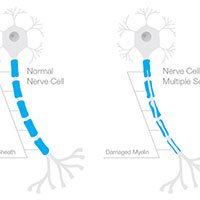Cord blood is collected from the umbilical cord soon after childbirth. Cord blood banking saves precious stem cells that can save lives and further research toward cures for diseases including birth injuries such as HIE and Cerebral Palsy.
This information was compiled from experts, government sources, and educational sources.
Keep reading to learn more about the importance of cord blood banking and how you can help today.
What Is Cord Blood Banking?
Cord blood banking is the process of collecting and storing blood from the umbilical cord shortly after a child is born. To bank cord blood, parents should select a cord blood bank and speak with their medical provider about it before the child is born.
What Are the Advantages of Cord Blood Banking?
Cord blood contains cells called “hematopoietic stem cells.” Hematopoietic stem cells have the incredible capacity to turn themselves into any kind of blood cell.
Because of the flexibility of what these stem cells can turn into, they can be used to treat numerous diseases. Blood disorders, immune deficiencies, metabolic diseases, cancers, and more can all potentially be treated using these stem cells.
It’s possible that stem cell therapy may also eventually help improve permanent conditions to non-regenerative tissues, like a brain injury at birth that causes Cerebral Palsy.
For example, a recent placebo controlled, phase two trial tresting stem cell therapy on children with spastic Cerebral Palsy found that “children who received one intravenous dose of at least 25 million stem cells per kilogram of their body weight saw improvements in motor function a year later…. greater than those typically observed for children of similar age and condition.”
While there currently is no cure for Cerebral Palsy, stem cell research offers hope for the future.
Is Cord Blood Banking Moral?
Another advantage of cord blood banking is that the stem cells are obtained through a painless and uncontroversial manner. Much research into stem cell therapy has been mired in ethical and polarized cultural debates. Cord blood is taken painlessly from what would otherwise be biological waste, making it an uncontroversial source for stem cell research and therapy.
How Is Cord Blood Banked?
After a child is born, a medical professional will clamp the cord in two places about 10 inches apart. The medical professional will sever the cord from the mother and from the baby. Then, she will insert a needle that collects approximately 40 milliliters or more of blood from the cord.
The blood from the cord is sealed and sent to a cord blood bank for storage.
How Is Cord Blood Stored?
There are several options for storing cord blood.
Public cord banks: will store cord blood for free, the cord blood is saved for whomever needs it including treatment for others and furthering academic research.
Private cord banks: will store the cord blood for a fee, the cord blood is saved for the donor and the donor’s family members.
Direct-donation banks: a hybrid of the public and private banks, these banks will store cord blood for public use and will also accept donations reserved for families.
Depending on how the cord blood will be used, the banks must comply with FDA regulations. The FDA regulations are meant to safeguard the cord blood from contamination and from transmission of infectious diseases. The FDA maintains a searchable database where you can review the status of cord blood banks.
Which Bank Type Should You Choose?
Ultimately, the answer depends on what your goals are. However, unless you have a family history of a specific disease that can be treated by cord blood, the common practice is to donate cord blood to public banks.
The ASBMT estimates that the chances of a family using their cord blood banked in a private bank are less than .04%. Simply put, there is so little chance that you yourself will use the cord blood, it will probably just sit there unused if stored in a private bank. By donating to a public bank or a direct-donation bank, you can help someone else out who can immediately benefit from the cord blood.
In addition to the practicalities of donating to a public or direct-donation bank, private banks tend to be expensive, often charging a fee of $1,000 – $3,000 and an annual fee ranging in the hundreds of dollars for as long as you store the cord blood. Public and direct-donation banks are free.
Why Is Cord Blood Banking Necessary Today?
As we have discussed in this post, cord blood is a precious resource. Both for the immediate treatment of a number of life altering diseases and for the furtherance of academic research that may unlock new cures and treatments, cord blood offers hope.
Beyond being a precious resource, it matters to bank cord blood now. The more cord blood that is donated today, the more people who can be treated and the faster medical research can progress. The compound benefit in the future of cord blood banking today is immeasurable.
Have More Questions About Stem Cell Therapy for Cerebral Palsy?
We wrote a post covering stem cell therapy for Cerebral Palsy–you can find it here. If you have other questions, we would love to hear from you! Drop us an email or contact us in the chat.
Sources:
Cord Blood: What You Need to Know. (2019). U.S. Food and Drug Administration. Retrieved 16 April 2020, from https://www.fda.gov/consumers/consumer-updates/cord-blood-what-you-need-know
C., Health, E., Disease, H., Disease, L., Management, P., & Conditions, S. et al. (2020). Banking Baby Cord Blood. WebMD. Retrieved 16 April 2020, from https://www.webmd.com/baby/should-you-bank-your-babys-cord-blood#1
Claire McCarthy, M. (2017). Why parents should save their baby’s cord blood — and give it away – Harvard Health Blog. Harvard Health Blog. Retrieved 16 April 2020, from https://www.health.harvard.edu/blog/parents-save-babys-cord-blood-give-away-2017103112654
Is Cord Blood Banking Worth the Cost? Here’s What the Experts Say. (2015). NBC News. Retrieved 16 April 2020, from https://www.nbcnews.com/business/consumer/cord-blood-banking-n400561
Pregnancy: Should I Bank My Baby’s Umbilical Cord Blood? | UW Health | Madison, WI. (2020). UW Health. Retrieved 16 April 2020, from https://www.uwhealth.org/health/topic/decisionpoint/pregnancy-should-i-bank-my-baby-s-umbilical-cord-blood/zx1634.html
Umbilical cord blood improves motor skills in some children with cerebral palsy | Duke Department of Pediatrics. (2020). Pediatrics.duke.edu. Retrieved 16 April 2020, from https://pediatrics.duke.edu/news/umbilical-cord-blood-improves-motor-skills-some-children-cerebral-palsy
Contact a Cerebral Palsy and Birth Injury Attorney
Getting help for a child with a birth injury can make a big difference. Early intervention and early treatment is often key to helping improve a child’s wellbeing. You must act quickly.
If you have questions about whether your child’s birth injury was caused by a preventable medical error, then our attorneys at Brown Trial Firm may be able to help.
Case Review at No Cost or Obligation
If you would like help investigating your child’s birth injury, please contact us. Our birth injury attorneys will be happy to give you a free case evaluation. We can also point you to great non-legal resources that can help you figure out your next steps.
Many birth injuries that cause cerebral palsy could have been prevented. Don’t wait, get help today. Call +1 (866) 393-2611, email us at [email protected], or use the live chat button for 24/7 assistance.
Approximately 30-50% of children with CP do have some form of mental impairment that will affect learning. Others face by physical barriers to learning.
In this article we discuss the factors that can affect the quality of life and the life expectancy of a person with cerebral palsy.
What’s the difference between Cerebral Palsy and Multiple Sclerosis? The conditions may seem similar, but are completely different! Read on to learn more.
In this post, we will cover how Cerebral Palsy may or may not affect a child’s intelligence and how to determine if a child may have intellectual impairments.
An occupational therapist can help people affected by cerebral palsy at all ages and capabilities to live a more fulfilling and independent life.
In this post, we discuss whether Bone Marrow Mononuclear Cells (BMMC) stem cells can be used to treat Cerebral Palsy.
Cord blood banking saves precious stem cells that can save lives and further research toward cures for diseases including birth injuries such as HIE and Cerebral Palsy.
Cerebral Palsy can interfere with the body’s ability to carry out commands coming from the nervous system.










